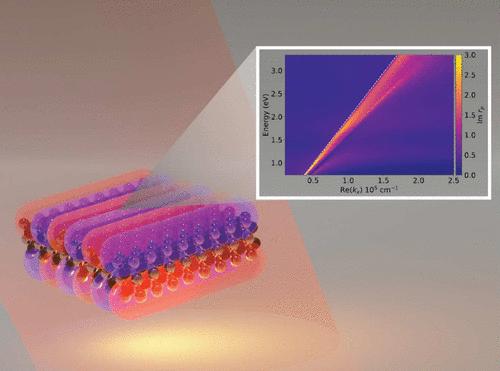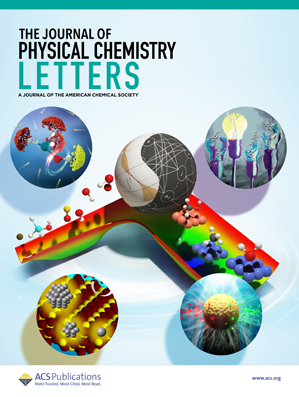Surface Plasmons in Two-Dimensional MXenes
IF 4.6
2区 化学
Q2 CHEMISTRY, PHYSICAL
引用次数: 0
Abstract
MXenes, a class of layered two-dimensional transition metal carbides and nitrides, exhibit excellent optoelectronic properties and show promise for fields ranging from photonics and communications to energy storage and catalysis. Some members of the MXene family are metallic and exhibit large in-plane conductivity, making them possibly suited for 2D plasmonics. The highly variable chemical structure of MXenes offers a broad chemical space to tune material properties for plasmonic applications, including plasmon-enhanced catalysis, surface-enhanced Raman spectroscopy (SERS), and electromagnetic shielding. However, this synthetic complexity has also presented several roadblocks in the process of moving MXene plasmonics into applications. For example, in the prototypical MXene Ti3C2Tx, there remains disagreement over the bulk plasmon energy and the assignment of a prominent resonance around 1.7 eV. We discuss fundamental models and theories of plasmon physics and apply these models to MXenes in order to clarify some of these problems. We outline the potential for hyperbolic plasmons in MXenes and propose new avenues for MXene photonics research.

二维 MXenes 中的表面等离子体
MXenes 是一类层状二维过渡金属碳化物和氮化物,具有优异的光电特性,有望应用于光子学、通信、能量存储和催化等领域。MXene 家族的一些成员具有金属特性,并表现出较大的面内电导率,因此可能适用于二维等离子体。二氧杂环烯化学结构的高度可变性为调整质子应用的材料特性提供了广阔的化学空间,包括质子增强催化、表面增强拉曼光谱(SERS)和电磁屏蔽。然而,这种合成的复杂性也给 MXene 等离子体技术的应用带来了一些障碍。例如,在原型 MXene Ti3C2Tx 中,关于体等离子体能量和 1.7 eV 附近突出共振的分配仍然存在分歧。我们讨论了等离子物理学的基本模型和理论,并将这些模型应用于 MXene,以澄清其中的一些问题。我们概述了 MXenes 中双曲质子的潜力,并提出了 MXene 光子学研究的新途径。
本文章由计算机程序翻译,如有差异,请以英文原文为准。
求助全文
约1分钟内获得全文
求助全文
来源期刊

The Journal of Physical Chemistry Letters
CHEMISTRY, PHYSICAL-NANOSCIENCE & NANOTECHNOLOGY
CiteScore
9.60
自引率
7.00%
发文量
1519
审稿时长
1.6 months
期刊介绍:
The Journal of Physical Chemistry (JPC) Letters is devoted to reporting new and original experimental and theoretical basic research of interest to physical chemists, biophysical chemists, chemical physicists, physicists, material scientists, and engineers. An important criterion for acceptance is that the paper reports a significant scientific advance and/or physical insight such that rapid publication is essential. Two issues of JPC Letters are published each month.
 求助内容:
求助内容: 应助结果提醒方式:
应助结果提醒方式:


